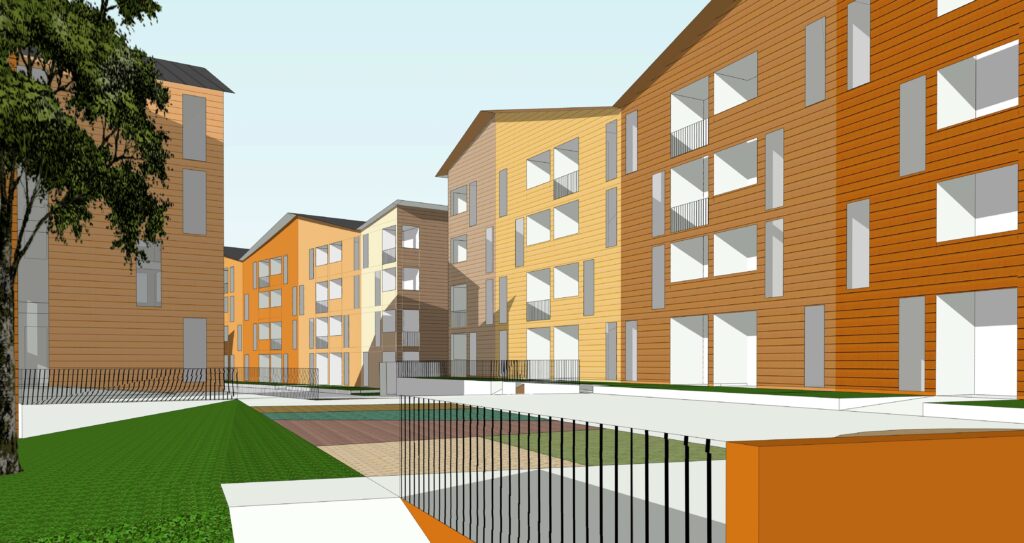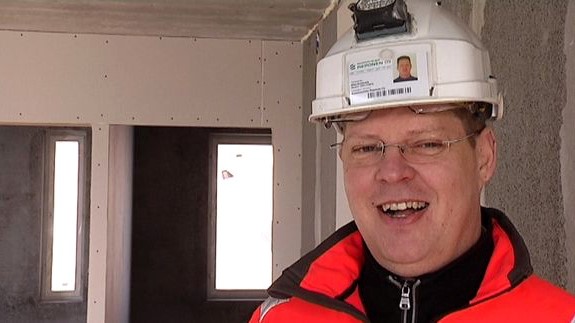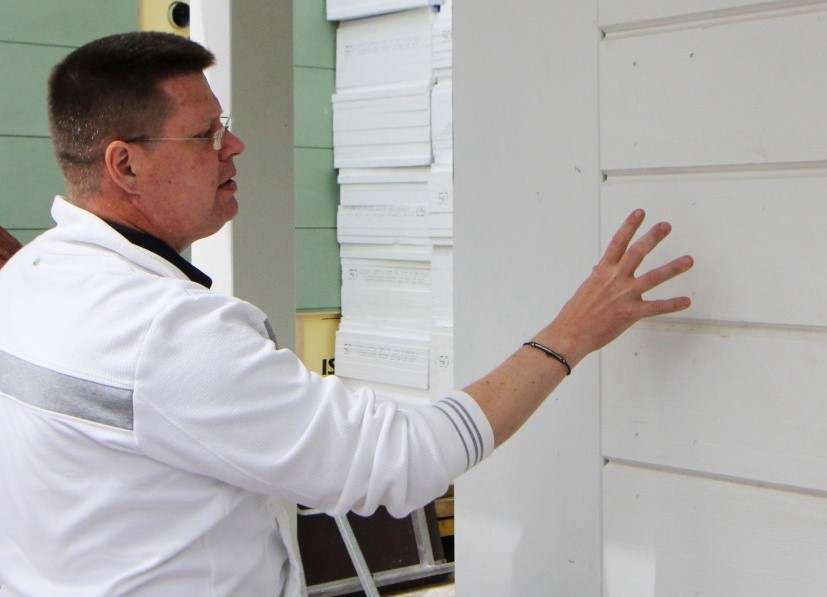Testing wood and concrete – which one wins in an apartment block?

In Helsinki, similar wooden and concrete buildings are being constructed next to each other. The aim of the construction project is to compare the cost and duration of construction work, the carbon footprint, and the comfort of living. The comparison is probably the first of its kind in the world.
In 2015, construction with wood reached a ten-percent share of the construction market of apartment blocks in Finland, thus meeting the target of the national wood construction programme (2012-2015). Two of the wooden buildings will be constructed in Kuninkaantammi, Helsinki.
Two wooden apartment blocks will be built in the brand new residential area by the Reponen Construction Company, but next to them Reponen is also putting up two concrete buildings. The buildings are similar, which enables the materials to be compared in new ways.
One of the aspects to be compared is the comfort of living. “Because the blocks are located next to each other, the residents’ experiences cannot be affected by differences in the environment, for example,” says Mika Airaksela, the CEO of Reponen.
According to Airaksela, the comparison of similar, adjacent buildings is probably the first of its kind in the world. Still, he is confident that he knows what the results will be.

Wood saves time, but is expensive
In terms of comfort, a wooden apartment block is felt to be quieter and have a better indoor air quality than a concrete building, even if the values measured in the buildings are almost identical.
“Also, the duration of construction work is well known. The construction of a wooden apartment block takes about two-thirds of the time needed for a concrete one,” Airaksela says.
Airaksela estimates that the construction costs of wood and concrete are very much the same. The advantage of wood is the rapidity of the construction work, but it is a more expensive material.
“It is more expensive to design a wooden apartment block. For concrete elements, you can put out a bid for tenders based on your own design, but the manufacturers of wooden elements are unable to modify their designs to suit the customer,” says Airaksela.
Another factor that increases the costs of wooden apartment blocks is the requirement for an automatic fire suppression system in every apartment. The most common option is a sprinkler system spraying water mist at a high pressure.
It is the fire regulations that have impeded the use of wood in apartment blocks. In 1997, wooden constructions were permitted up to a maximum of four floors, and only in 2011 were wooden structures authorized in blocks of up to eight floors.
Giant elements from Finnish wood
Reponen builds wooden apartment blocks with prefabricated elements, which makes the construction work efficient. When constructing Europe’s largest wooden apartment block for the Housing Fair 2015 in Vantaa, the company was able to double the size of the wooden elements compared to its previous construction projects.
The elements used by Reponen are manufactured of Finnish wood. During the construction they are protected by a tent, so that they always stay dry. “In constructing with wood, at least with the method we use, the only option is to ensure the dry chain throughout the project,” says Airaksela.
One of the topics researched in the Kuninkaantammi project is the carbon footprint of the construction materials. This will be compared during the construction work, but also during the whole life cycle of the buildings.
The Finnish innovation fund Sitra studied the carbon footprint of a wooden apartment block constructed by Reponen in Vierumäki in 2011, and found that the carbon dioxide emissions were 29 percent lower in the wooden building compared to a concrete one. When the emissions caused by wood and concrete were calculated across the expected hundred-year life cycle of the buildings, the emissions from the wooden building were five per cent less than those from the concrete one.
Finland has a few dozen wooden apartment blocks
Whereas Finnish single-family detached homes are mostly built of wood, there are only a few dozen multi-storey wooden apartment blocks in the country. Wood could also be used more frequently in renovation work and infill construction.
According to the website Puuinfo.fi, about 800 of the 1.3 million Finnish apartments in multi-storey blocks were located in wooden buildings in early 2015. The number of new wooden apartments under construction or being planned was just under 7,000.
The two wooden and two concrete buildings in the Kuninkaantammi area will contain a total of about one hundred homes. The apartments in the wooden buildings will be for rent, while the concrete ones will consist of right-of-occupancy homes.
According to the original plans, the foundations of the buildings in Kuninkaantammi should have been completed by now, but the start of construction has had to be delayed due to the scheduling of municipal engineering. Airaksela estimates that the project will start next summer, and the buildings will be complete in Christmas 2017.
Located between the Helsinki Central Park and the Hämeenlinna motorway, Kuninkaantammi is a former warehousing and industrial area. It is designed to house some 5,000 residents.

forest.fi: Professor of wooden structures looks for cooperation with industry
forest.fi: Building with wood needs fair rules
woodproducts.fi: Wood construction in Finland
Kirjoita kommentti